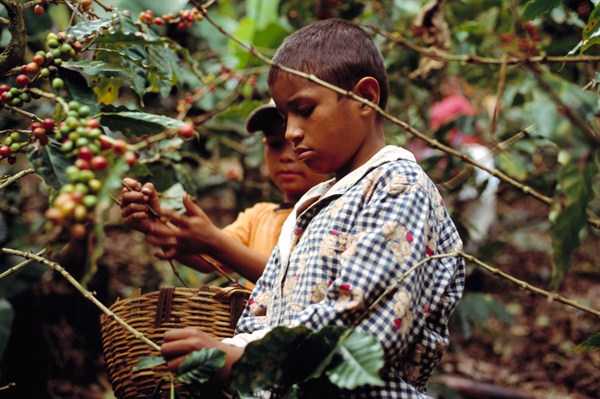OAKLAND, California, U.S. – The Weather Channel and Telemundo have released a new investigation called “The Source: The Human Cost Hidden Within a Cup of Coffee.”
This work sheds light on a disheartening and serious reality in the coffee industry–that child labor not only exists, but is often necessary for families to survive.
Though the farms covered in the report are not Fair Trade Certified, we have a collective responsibility to engage in dialogue and work toward meaningful solutions.
For anyone close to coffee, the content of this report comes as no surprise. The fundamental economics of coffee are broken.
Coffee farmers are earning less than their grandparents did decades ago. Rural communities are deeply poor and the costs of production, let alone sustainable production, continue to rise. By most estimates, labor accounts for 50-70% of the cost of production.
With chronically low market prices and a scarcity of companies willing to pay more, the downward pressure on farmers to reduce costs is unrelenting.
These are the socioeconomic conditions that make child labor not only possible, but probable. How much a coffee farmer earns and what resources they have access to really matters.
We see this when farmers can’t afford to send their children to school, hire adult workers, or invest in safer, more sustainable practices. We see it when farmworkers migrate to find work, bringing their children with them because there is no other option.
When Fair Trade USA began working with coffee farmers in 1998, we did so with these complex realities in mind. In fact, we did so because of them. Unfortunately, no one certification or auditing program can guarantee that there is never labor abuse on a farm. And they weren’t created to. Although Fair Trade is not a panacea, it is one of the best-positioned approaches to help undermine the root causes of child labor in farming communities in the long-term.
Fair Trade works to combine industry-leading methods not only for detection of labor abuse (standards, audits and grievance procedures), but also mitigation (farmer-led community development and direct economic benefit to producers). It’s about reducing risk over time.
The audit, which is also expanded for high risk farms and regions, is just one piece of this multi-pronged approach.
Other tools and mechanisms, like a cooperative’s own internal control systems (ICS), are critical to protecting against labor abuse.
The Fair Trade model requires and formally audits every certificate holder’s ICS. For Fair Trade to be truly successful it must respect the role of farmers as protagonists in their own stories.
Another way that Fair Trade USA is working to advance solutions in this area is through research. We’ve partnered with Cornell University to better understand the cost of sustainable production (COSP) on coffee farms in Latin America.
The coffee trade had been around for over 500 years, yet very little is known about how much farmers really need to earn to cover their costs.
The first phase of this research, which will be released in advance of the Global Specialty Coffee Expo in April, reveals a new methodology for understanding the COSP for small-scale growers.
Early results tell us more about how much farmers need to earn to stay in business in the short, medium and long term. It also reveals the breakeven points where it is uneconomical to produce coffee, where farms are more likely to cut corners to stay in business.
We truly believe that understanding COSP is the first step in building a new economic model in coffee, one that works to make coffee farming a viable profession. Only then can we begin to alleviate the very real desperation that brings children to the fields.
















